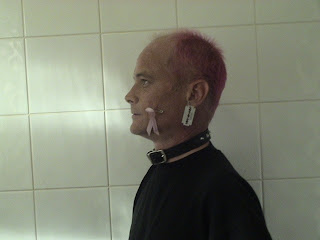When looking at hair dye colors, often it is a question of covering roots and not really wanting to do much more.
Many women who turn gray don't do anything radical, prefering products a shade or two different than their natural color, designed to color only the gray. The result is a natural two-tone effect in which the gray appears to simply be a lighter shade of the natural hair color. Others decide that this is a good opportunity to find out what they'd look like with a completely different hair color and go from brown to blond, red or black. For more ideas see here
Gray hair is in fact one of the most color resistant types of hair. One of the reasons gray hair is so challenging is it is a different texture than normal hair. Gray hair usually grows in coarser than normal hair because it lacks pigment.
The key to coloring gray hair is softening hair, this will help open the hair cuticle so color is more easily accepted on the hair shaft. One way to do this is by applying a 20% solution of peroxide to gray hair. You can leave the solution on for up to ten minutes. Once this step is complete, normally you can apply any color you like. Try here for more ideas
Gray hair does require a little more care than other hair types. For one, it can easily turn yellow if exposed to too many free radicals and pollutants from the environment. Fortunately there are a number of shampoos and other hair products you can buy to help minimize any yellowing that may occur. Gray hair also needs lots of moisturizing and conditions. In general you’ll want to stay away from products with lots of alcohol, which can dry hair and make it seem brittle.
When you find a hair color that you like, look at the swatches on the back of the boxes or read the instructions to see what results you can expect for your original hair color. Remember that all hair color results are determined by a user's own natural color.
For more ideas on managing hair dye colors for graying hair, try here
